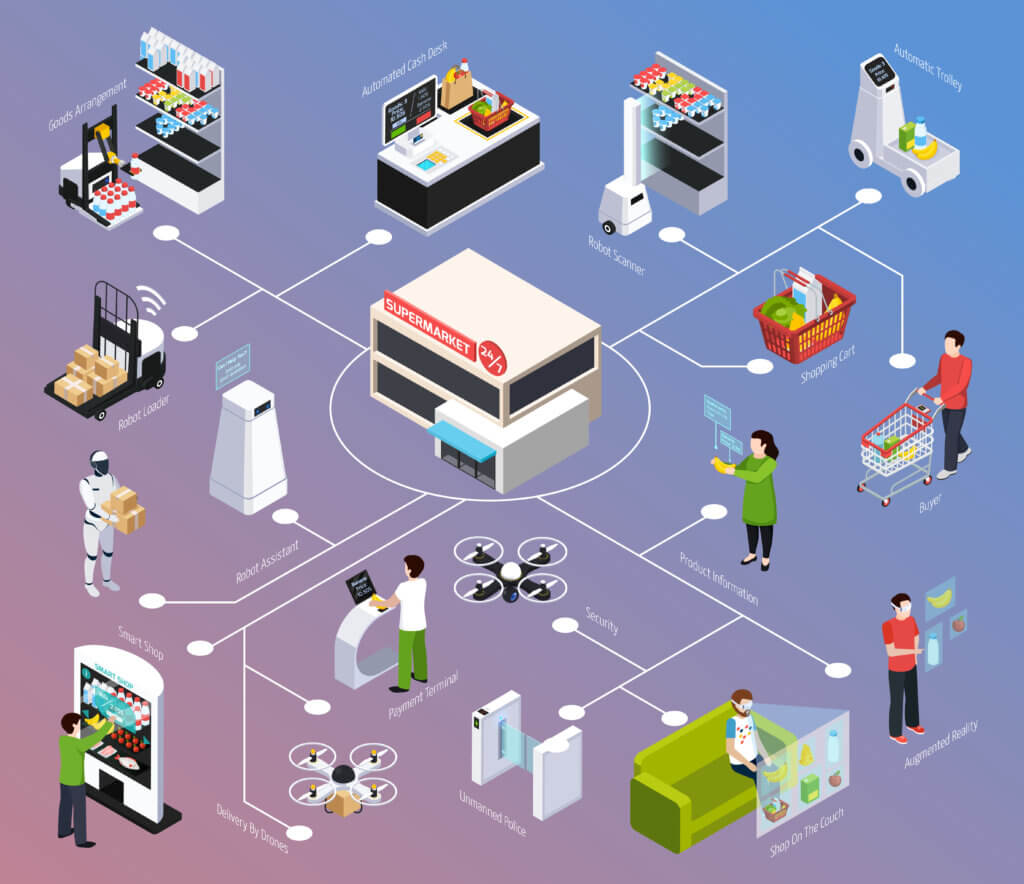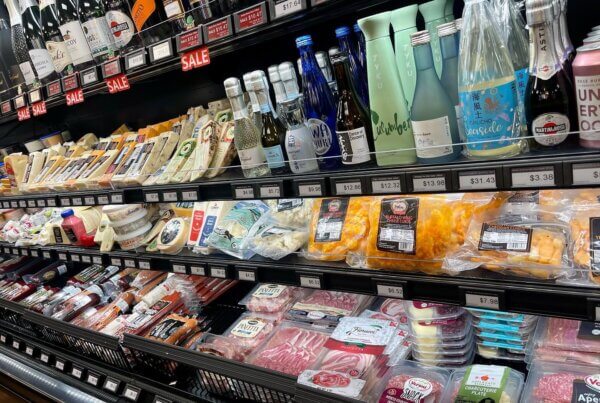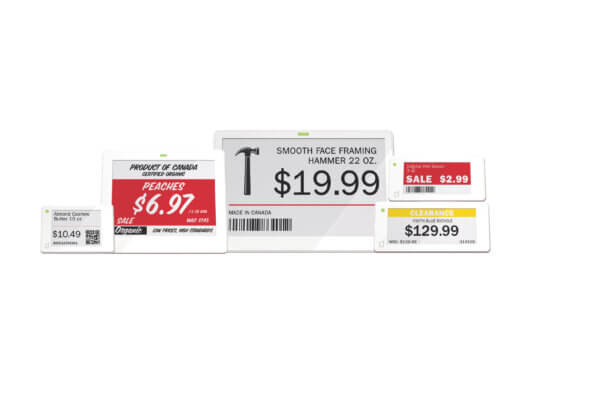“As technology advances, it reverses the characteristics of every situation again and again. The age of automation is going to be the age of ‘do it yourself.’”
– Marshall McLuhan
The automation journey, as it pertains to retail, has progressed significantly recently, and has provided a customer-first experience that is changing the way the retail industry now operates. Automation has evolved to become an essential part of contributing to customers having an enjoyable and efficient shopping experience. Automation is now expected and somewhat essential to retail operations, and is helping to create a beneficial customer experience.
Self-checkout is one of the most straightforward and common uses of retail automation, and consumers love it. As the customer purchases their items, the automated system can suggest additional items that may interest them, and generate individualized product offers and suggestions based on their purchase history and preferences. The customer’s past purchase history, along with their current shopping patterns, can be used to direct them towards the items they are likely looking for.
Automation can also be used to help the customer after they have left the store with automated billing and post-purchase services that can help to ensure the store remains in contact with them. The store can send automated emails or newsletters with promotions and discounts to incentivize customers to come back for future purchases.
Finally, customer feedback surveys can be sent out through automated systems to help the store understand what their customers want and expect in their future shopping experiences. By having automated systems in place to capture and deliver customer information, the store can make necessary changes accordingly to help them improve the customer’s shopping experience.
The automation journey in retail has come a long way, and in the retail experience it is essential to ensuring that customers have a positive and efficient experience in-store. Automating processes such as product offers, customer service, post-purchase services, and customer feedback surveys are key components of the journey that allows retailers to provide an individualized experience for their customers.
“Sustainability is becoming an important differentiator for retailers and automation is key to achieving this,” explains a Capgemini Research Institute report. “Seventy five percent of retailers view automation as a way to offer more sustainable and environmentally-friendly solutions to customers. Leveraging automation as a means for retailers to become more ethical or sustainable is also attractive to consumers.”
Additionally, the Capgemini Research Institute report outlines the customer journey through automation which, according to the data, includes part or all of the following steps: Self-identification (technologies identifying customers inside the store), Product information (technologies showing product information inside the store), Product selection (technologies assisting customers in product selection), In-store navigation (guiding customers with store maps and inventory availability), Self-checkout (barcode/QR code scanner or advanced technologies such as facial recognition/sensors/cameras), Payments (leveraging consumers mobile or advanced technologies like facial recognition), Product replenishments (e.g., robots, cameras scanning shelves for out of stock products and alerting employees), Automation of customer tracking within stores (facial recognition, in-store cameras tracking everything in store – merchandise, associates, shoppers, products), Facilities management (e.g., store mounted cameras identifying spills, robots to clean the floor, motion-detection lights, IoT devices to detect temperature), Order delivery and returns from/to stores (robots deliver/hand over merchandise to customers/using vending machines/smart lockers), Order fulfillment from stores (robots for picking click and collect/online orders or using automated micro fulfillment centers).



